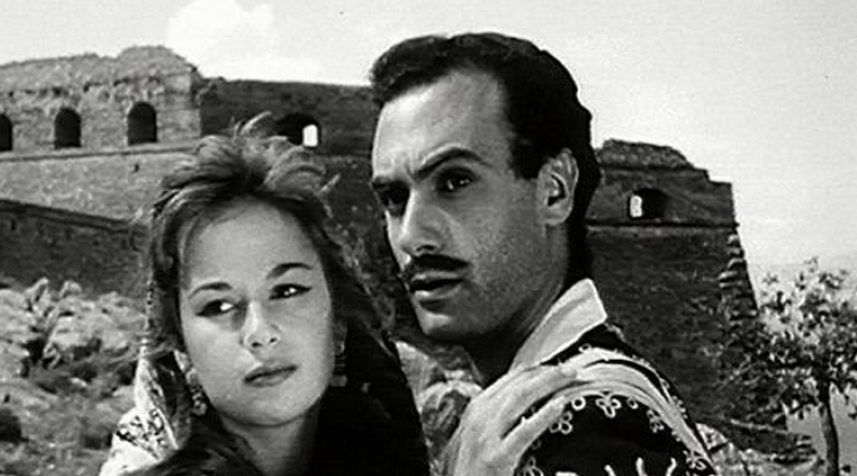
The story of Maria Pentagiotissa contains all the elements of an urban legend, yet she was a real person and some consider her to be the first femme fatale in modern Greece.
Maria Daskalopoulou is said to have been born in 1821 in the village of Pentagioi, in the Fokida region of Central Greece, hence her name Pentagiotissa.
It is said that she was a woman of exceptional beauty and also openly erotic, at a time when Greece’s rural communities were so conservative that a woman showing her sexuality in any way could even get stoned to death in extreme cases.
Only a few stories have survived from her youth. Her father is said to have been a schoolteacher, hence her characterization in a folk song as a “baby teacher.” She was a beautiful and dynamic woman for her era. Her story was a source of inspiration for theatrical plays, films, and poems.
Maria Pentagiotissa the first femme fatal of modern Greece was famed for her beauty
Sophisticated and gentle, Maria Pentagiotissa was a real temptation to the men around her. Men even spoke about her in hushed tones. When she was walking around the village, men reportedly gazed at her, full of lust. Suitors even crawled on their knees to win her love.
Her erotic behavior shocked the conservative society of the village, and the actions of her attention-seeking suitors were frequently the talk of the town. Ultimately though, she seemed to have found her man.
She fell in love with a young man from her village, Giorgos Papageorgiou, who went by the nickname Tourkakis. Maria did not hide her feelings for him and a torrid affair began.
However, that was her big mistake. Their budding love and the blossoming of their relationship upset the villagers who would not accept any kind of premarital relationships. Pressure on the family soon followed.
They urged her brother, Thanasis Daskalopoulos, to take action and to put an end to this “forbidden” affair. They feared that such a relationship would be a bad example for other girls in the village.
The first femme fatal of modern Greece, Maria Pentagiotissa, came under great pressure from her brother to end the relationship. This pressure came to a tragic end, however, when her lover Tourkakis killed her brother. The two men had a violent argument and Tourkakis threw Daskalopoulos off a cliff, then covered his dead body with rocks.
Maria Petagiotissa, the first femme fatale of Greece?
When a villager found her brother’s body, Maria and Tourkakis were immediately accused of the crime and the couple was arrested. Maria was considered to be the accomplice and the couple was tried by a Messolonghi court.
Tourkakis was sentenced to a long prison sentence, but Pentagiotissa was acquitted. It is said that the judges were partial to her because of her beauty. Others said that one of the jurors was even an ex-lover of hers!
After the loss of her brother and her love interest, Pentagiotissa married a widower in the nearby village of Paleokatouno and raised and educated his four children from his previous marriage.
Pentagiotissa died in 1885 without ever having children of her own. According to others, she spent the last years of her life in a convent.
The legend of Maria Pentagiotissa in art
The story of Maria Pentagiotissa, the first femme fatal in Greece, became famous all over the country and her legend began to grow. Kostis Palamas, in the poetic collection “My Eyes of the Soul” (1890), dedicated a poem to her celebrating her beauty.
Acclaimed writers Pavlos Nirvanas, Dimitrios Kambouroglou, and Andreas Karkavitsas wrote about Pentagiotissa and her legend.
In addition to inspiring a folk song with dozens of versions and variations, her life was a source of inspiration for theatrical plays, films and poems.
In the late 1920s, director and actor Achilleas Madras visited Pentagioi to gather material for a film about Maria’s life, but villagers kept their mouths shut. The film, however, was eventually shot in 1929.
Titled “Maria Pentagiotissa,” it starred Frida Poupelina (with the nickname Nena Mae), Emilios Veakis, and Achilleas Madras.
In a cinematic turn, the plot makes Maria’s love a brave bandit and she leaves the village to follow him to the mountains, where he was hiding.
In 1957, Costas Andritsos produced another movie, titled “Maria Pentagiotissa,” starring the lovely Aliki Vougiouklaki along with Andreas Barkoulis, Stefanos Stratigos, Lambros Konstantaras, Kostas Hadjichristos, and Thanassis Vengos. The film sold 31,254 tickets and boosted Vougiouklaki’s image and career.
The popularity of the film and the legend of Maria Pentagiotissa led to a 1967 film entitled “The Daughter of Pentagiotissa,” written by Nestor Matsas and directed by Antonis Tempos.
Starring Giota Soimiri, Theodoros Moridis, and Stefanos Stratigos, it sold 55,483 tickets, serving as further proof that the legend of Maria Pentagiotissa still intrigued the Greek public.
See all the latest news from Greece and the world at Greekreporter.com. Contact our newsroom to report an update or send your story, photos and videos. Follow GR on Google News and subscribe here to our daily email!



